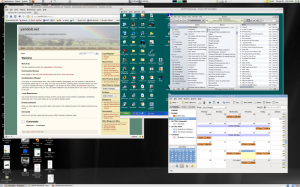(for the geekishly inclined!)
yandoit.net uses the shared hosting service justhost.com, which is one of a number of large hosting companies owned by Endurance International Group Inc. based in Boston, Massachusetts. Hosting costs only a few dollars a month.
yandoit.net is built on WordPress 3.4.1 using the Weaver ii theme. WordPress and the Weaver ii theme are free software.
yandoit.net also uses ‘plugins’ for extra functionality. Plugins are extra bits of code, mostly written by enthusiasts in the WordPress community, that add extra features to the basic WordPress platform. yandoit.net uses the following plugins:
- All-in-One Calendar (the calendar page)
- Authors Widget (lists posts by author)
- Browser Blocker (detects old versions of IE. I had to hack it a bit to make it work)
- Cimy User Extra Fields (collects info when you sign up)
- Configure SMTP (handles email responses)
- Dashboard: Pending Review (for moderation of posts)
- Fast Secure Contact Form (to contact me)
- Peter’s Collaboration E-mails (more email functions)
- Post From Site (this is the plugin that provides the Add Post link and form – I had to hack this one too).
- Slimbox2 with Slideshow (the fancy display of posts containing photos)
- Theme My Login (login and sign-up screen)
- User Role Editor (what you can and can’t do)
- Weaver II Theme Extras (save and restore theme settings)
- WP Approve User
- WP Image Size Limit
If you want to play around with WordPress yourself, create a free account on wordpress.com. It is an excellent place to host your own personal blog. You won’t be able to add any plugins, however. If you want to learn more about WordPress than is possible at wordpress.com, or about web development in general, there are plenty of options. Many companies offer free web hosting (do a search). Or you can install a web server on your own computer.
- 000webshost.com: One of many free hosting services. I don’t know anything about them, but they seem to offer all you need.
- XAMPP: easy-setup free web server for Windows, Mac or Linux.
- WordPress: free download.

